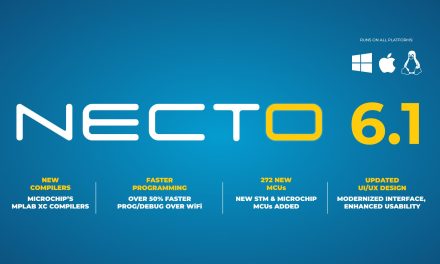 Gavin Stoppel Product Application Manager at Harting explores how industrial RFID applications are advancing through an integrated approach
Gavin Stoppel Product Application Manager at Harting explores how industrial RFID applications are advancing through an integrated approach
The safe and reliable flow of information is a paramount concern for the optimisation of industrial processes. New developments in radio-frequency identification (RFID) technology now make it possible, for the first time, to extend the information chain down to the lowest field level and implement it into industrial applications in a direct and sustainable manner.
The use of high-reliability RFID technology aids the precise control of automation, as well as repeatability, thereby enhancing the quality of a process with increased transparency, reduced downtime, and lower costs. These aims are realised in a new generation of RFID components from company’s such as Harting, which represent a major step forward in this context (Fig.1 Above Right).
As so-called ‘permanent tags’, the company’s Ha-VIS RFID transponders offer an extremely long service life. As ‘hard tags’, they are also designed for applications involving the most demanding ambient conditions for mounting on metal surfaces. Features include compact design, high transmission range, an extensive temperature range, hermetic sealing, resistance to mechanical vibration and shocks, and the ability to withstand a multitude of chemicals.
The use of special manufacturing methods such as LDS (laser direct structuring) helps these devices to meet the stringent standards of target markets such as industrial automation. In this context, the positive results from standards-based environmental simulations in long-term testing, as well as cyclic stress tests, enable these transponders to be successfully integrated into the industrial environment.
In addition, all of these RFID transponders go through ‘end of line’ testing, subjecting the devices to range measurement, in addition to quality assurance, and offering the option of storing individual customer data.
A key element in the development of individual RFID components is to ensure a high level of compatibility. This is achieved in the company’s transponder family by ensuring conformity to standards such as EPC1 Gen2 and ISO 1800 6-c.
Based on the lowest field level covered by this range of transponders, the company is moving forward with the introduction of its new Ha-VIS RF-R500 reader. This makes it possible for data from the tagged objects to be read out over considerable distances in high-frequency hostile industrial environments, while offering superior reliability.
 Pre-packaged available solution
Pre-packaged available solution
A further stage in easing the implementation of RFID systems in industry is provided by a new RFID box, which contains all the necessary components, including the RFID reader, power supply, fuse protection and a network switch, all packaged in a rugged IP65 housing (Fig.2 Left). In the past, these individual sub-assemblies entailed labour-intensive selection and installation.
Particular features of the box are its robust design (2mm vanadium steel), the optimum match of the installed components, and ease of installation. Due to its very high protection classification (IP 65), the RFID box is ideally suited to open-air applications, and is designed so that the installed components can be very easily adapted to individual customer requirements, thereby ensuring maximum flexibility.
The RFID box is fully pre-installed and tested so that it only needs to be connected to the power supply, network and RFID aerials.
The next stage in the process
The next stage in the implementation of a successful industrial RFID system is the need to interface to process software: something that is normally handled by system administrators or internal IT departments.
To speed this process, a system known as Ha-VIS Middleware has been developed to provide easy and cost-effective integration of RFID hardware into existing software systems (Fig.3 Right). As a result, users are able to operate the RFID reading devices to process the transponder-supplied information without the need for any programming.
 This system provides operators with the means to implement automation of the lowest field level into existing processes without the need for years of experience of RFID systems.
This system provides operators with the means to implement automation of the lowest field level into existing processes without the need for years of experience of RFID systems.
This Middleware operates with a wide selection of data formats – including XML, CSV and MySQL – enabling the immediate use of information. It also meets the requirements of the EPC standard ALE 1.1, allowing it to not only read RFID transponders but also write to them in conformity with the standard.
The ability to integrate RFID hardware in an industry-standard environment without the need for programming leads to customer benefits in terms of ease of use and cost-effectiveness, making it easy to implement the rapid introduction of RFID into the company environment.
Harting


